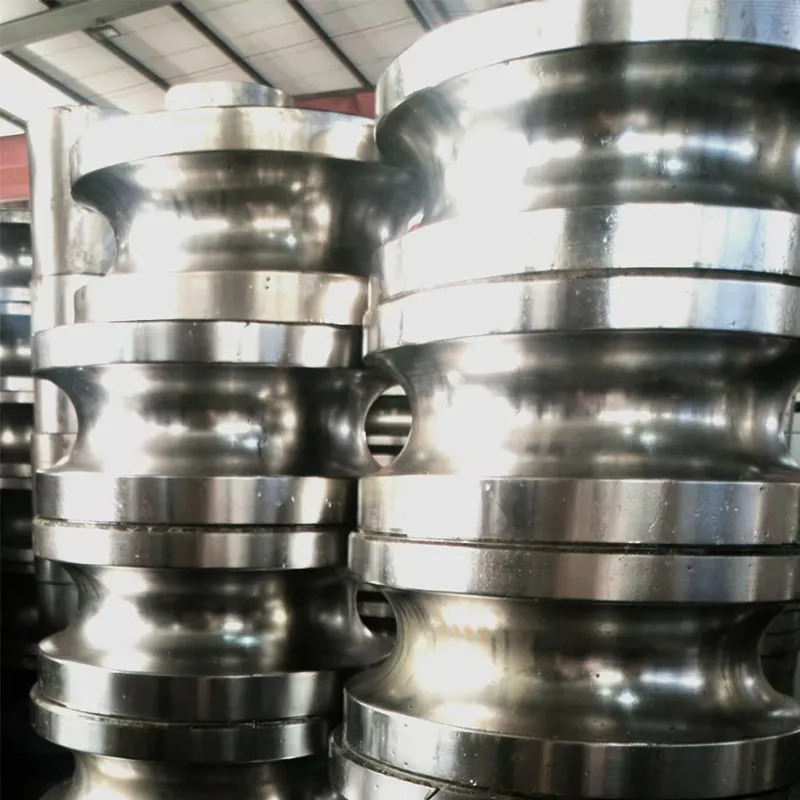Design and Functionality of Rotary Shear Machinery for Industrial Applications
Understanding the Rotary Shear Machine An Essential Tool in Manufacturing
In the dynamic world of manufacturing, efficiency and precision are paramount. One of the crucial machines that plays a vital role in this sector is the rotary shear machine. This sophisticated equipment is designed to cut, shear, and shape various materials, contributing to the creation of high-quality end products. Understanding how rotary shear machines work, their applications, and their benefits can provide valuable insights for professionals in the manufacturing industry.
What is a Rotary Shear Machine?
A rotary shear machine is a mechanical device that uses rotary blades to cut materials as they pass through the machine. Unlike traditional shearing methods that use straight blades, rotary shear machines employ a circular blade motion to perform cutting operations. This design allows for continuous and efficient cutting, making rotary shears ideal for high-volume production environments.
Rotary shear machines are commonly used for processing flat materials such as metal sheets, composite materials, and various plastics. The ability to produce precise cuts without compromising material integrity makes them an invaluable asset for manufacturers across numerous industries, including automotive, aerospace, and construction.
How Does a Rotary Shear Machine Work?
The operation of a rotary shear machine involves three primary components the rotary blades, the material feed mechanism, and the control system.
1. Rotary Blades These are circular blades that rotate at high speeds to shear through materials. Depending on the type of material being processed, the blades can be made from various materials, including high-speed steel and carbide alloys, which enhance durability and performance.
2. Material Feed Mechanism This component ensures that materials are consistently fed into the rotary shear machine at a predetermined speed and alignment. The precise positioning is crucial as it affects the quality of the cut.
3. Control System Modern rotary shear machines are often equipped with advanced control systems that allow operators to adjust cutting speeds, blade angles, and other parameters. These controls enable customization to meet specific production requirements.
The combination of these components allows rotary shear machines to execute a range of cuts, from simple straight edges to complex shapes, with high levels of accuracy and repeatability.
Applications of Rotary Shear Machines
rotary shear machine

Rotary shear machines are employed in various industries for numerous applications
- Metal Fabrication In the metalworking industry, rotary shears are used to cut metal sheets and strips, producing components for machinery, automotive parts, and construction elements. - Textile Manufacturing In textiles, rotary shears are employed to cut fabric rolls into precise shapes and sizes, essential for garment production. - Plastic Processing The versatility of rotary shear machines extends to plastics, where they can cut various plastic sheets and profiles for use in packaging, automotive, and consumer goods.
Benefits of Using Rotary Shear Machines
The adoption of rotary shear machines in manufacturing processes comes with several notable benefits
1. Efficiency Rotary shear machines operate continuously, allowing for higher production rates compared to traditional cutting methods.
2. Precision The circular cutting action ensures clean, precise cuts with minimal material wastage, enhancing yield and reducing costs.
3. Versatility These machines can process a range of materials and thicknesses, making them suitable for diverse manufacturing needs.
4. Reduced Labor Costs Automation features in modern rotary shear machines minimize the need for manual intervention, leading to lower labor costs and reduced risk of human error.
5. Improved Safety Rotary shear machines are often designed with safety features that protect operators, reducing the likelihood of accidents in the workplace.
Conclusion
In conclusion, rotary shear machines are integral to modern manufacturing, providing advanced cutting solutions that enhance production efficiency and product quality. Their ability to handle a variety of materials and applications makes them an essential tool in various industries. As technological advancements continue to evolve in this field, the rotary shear machine will likely become even more sophisticated, further driving innovation in manufacturing processes. Understanding this machine and its capabilities is crucial for manufacturers aiming to stay competitive in a rapidly changing market.
-
High Frequency Straight Seam Welded Pipe Production Line-BzZhou Xinghua Machinery Equipment Manufacturing Co., LTD.|line pipe steel&welded gas pipeNewsJul.30,2025
-
High Frequency Straight Seam Welded Pipe Production Line-BzZhou Xinghua Machinery Equipment Manufacturing Co., LTD.|High Precision&Automated SolutionsNewsJul.30,2025
-
High Frequency Straight Seam Welded Pipe Production Line - BzZhou Xinghua Machinery Equipment Manufacturing Co., Ltd.NewsJul.30,2025
-
High Frequency Straight Seam Welded Pipe Production Line-BzZhou Xinghua Machinery Equipment Manufacturing Co., LTD.|Precision Welding, High EfficiencyNewsJul.30,2025
-
High Frequency Straight Seam Welded Pipe Production Line|BzZhou Xinghua|Precision Welding&EfficiencyNewsJul.30,2025
-
High Frequency Straight Seam Welded Pipe Production Line - BzZhou Xinghua|Precision Engineering&EfficiencyNewsJul.30,2025


